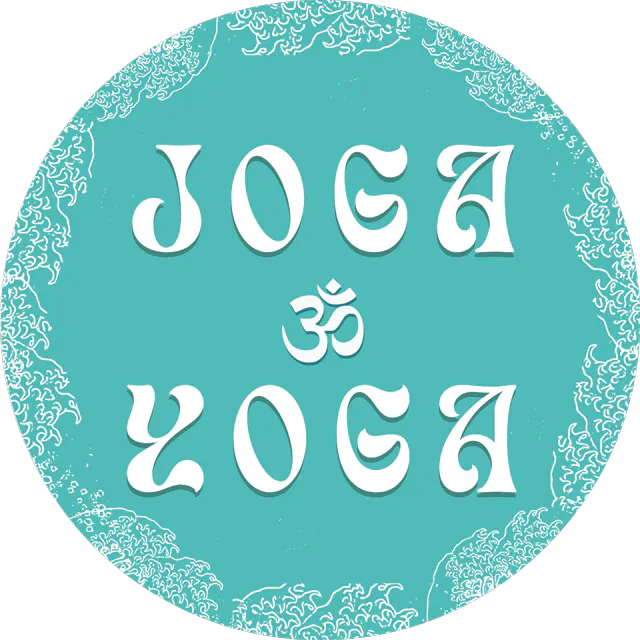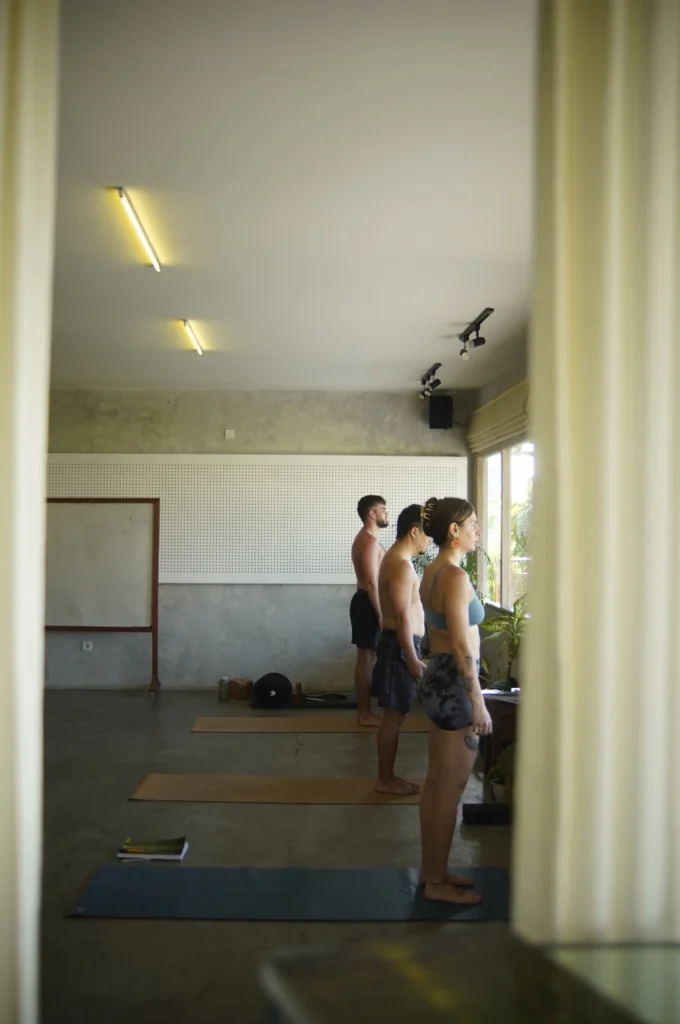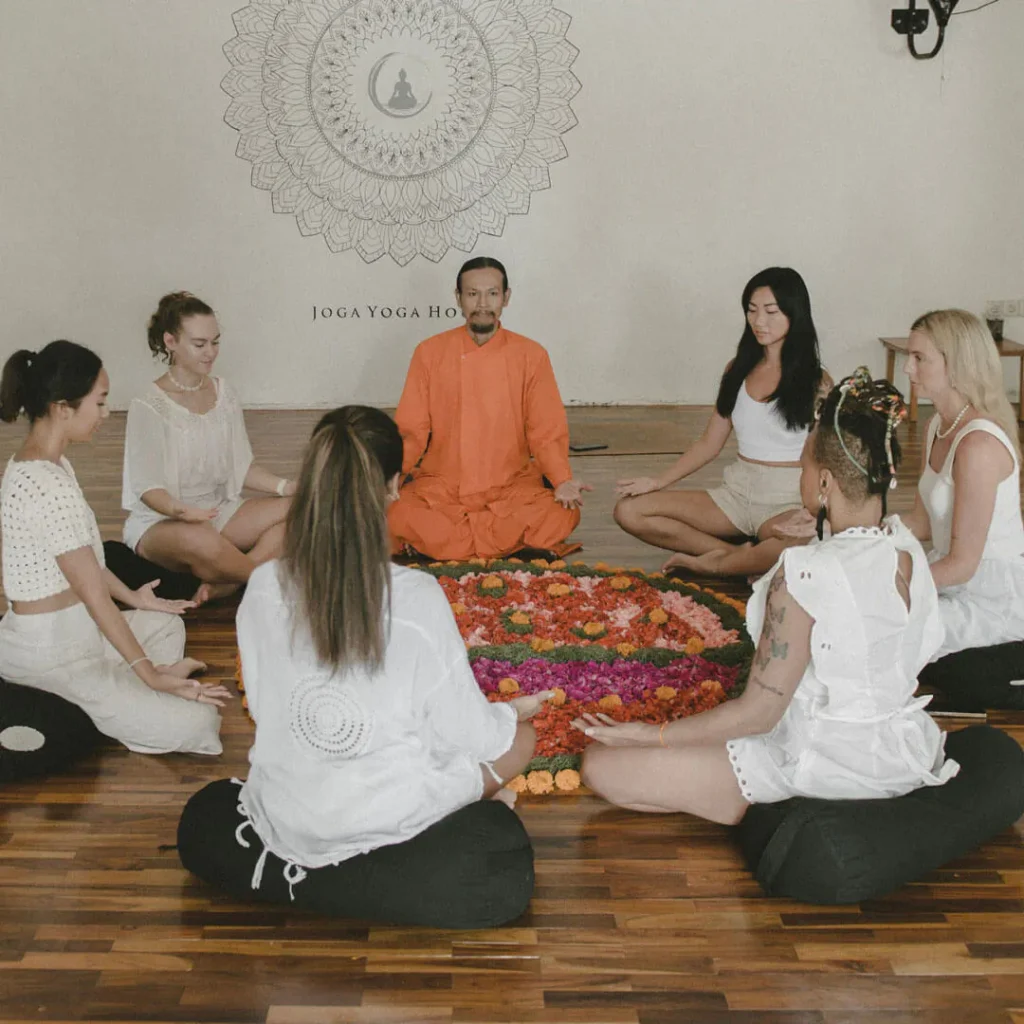Introduction: The Forgotten Power of Your Breath
Most people go through their entire day without once thinking about their breath. It’s automatic, quiet, and taken for granted. But in the ancient yogic traditions, breath was never something casual. It was viewed as a powerful gateway between the body and the mind, and ultimately, between the self and the soul.
Yogis understood that the way we breathe shapes our inner world. Fast or shallow breaths activate the nervous system and create restlessness. Deep, intentional breathing draws the mind inward and stabilizes energy. This is where the power of Nadi Shodhana comes in.
Nadi Shodhana, also known as alternate nostril breathing, is far more than just a calming technique. It is a classical yogic pranayama, designed to purify the subtle channels of energy in the body. Sometimes referred to by its alternate name Anulom Vilom, this practice is foundational in both traditional Hatha yoga and modern therapeutic yoga systems.
What makes Nadi Shodhana unique is not just its simplicity but its purpose. It is a method for balancing the energies within the body — solar and lunar, masculine and feminine, left brain and right brain. Unlike generic breathwork used for relaxation, Nadi Shodhana is a precise and intentional practice rooted in thousands of years of spiritual science.
At Joga Yoga, we teach Nadi Shodhana as part of our deeper exploration into pranayama and energy mastery. Students in our Yoga Teacher Training in Bali not only learn the technique but also the energetic principles behind it, allowing them to apply it with confidence and authenticity both in personal practice and in their future classes.

What Is Nadi Shodhana?
The word Nadi in Sanskrit means “channel” or “flow,” and Shodhana means “purification.” Together, Nadi Shodhana translates to the purification of the energy channels, specifically referring to the subtle pathways through which prana, or life force, flows.
In yogic science, the human body is more than just muscles and bones. It is also composed of an energetic structure known as the subtle body. Within this layer exist thousands of nadis — energy channels that intersect, converge, and carry prana throughout the body. The three most important nadis are Ida, Pingala, and Sushumna. Ida runs along the left side of the spine and is associated with cooling, lunar, and feminine energy. Pingala flows on the right, connected with heat, solar energy, and activity. Sushumna runs through the center of the spine and is the primary channel activated during deep meditative states.
When these channels are blocked — whether by physical tension, emotional stress, or unconscious habits — prana cannot flow freely. This can result in imbalances on both physical and mental levels. Nadi Shodhana pranayama is designed to clear these channels, restore energetic harmony, and awaken the subtle system.
This practice is part of the broader discipline of pranayama, which involves controlling the breath to influence life energy. Nadi Shodhana stands out because of its balancing effect. It doesn’t stimulate or suppress — it harmonizes. For those beginning their journey into energy-based practice, or seeking to go deeper beyond posture-based yoga, this form of breathwork is a vital gateway.
You can explore more about the science and applications of pranayama in our complete guide on Mastering Pranayama Techniques, where breath is not only seen as air but as the language of energy.
How Nadi Shodhana Works: The Physiology and Energy Science
Nadi Shodhana operates on multiple levels — it affects both the physical nervous system and the energetic field of the body. On a biological level, the breath is deeply connected to the autonomic nervous system, which controls our stress and relaxation responses. When practiced slowly and mindfully, alternate nostril breathing activates the parasympathetic system, calming the body and lowering stress hormones. This is why the technique is often used for emotional regulation, sleep improvement, and anxiety relief.
At the same time, the breath is influencing the brain hemispheres. Breathing through the left nostril stimulates the right hemisphere of the brain, which is associated with intuition, emotion, and creativity. Breathing through the right nostril stimulates the left hemisphere, linked with logic, structure, and reasoning. By alternating nostrils, Nadi Shodhana balances these two aspects of consciousness. This helps to synchronize thought, improve mental clarity, and support emotional equilibrium.
From the perspective of subtle anatomy, the practice has an even deeper function. Each nostril connects with either the Ida or Pingala nadi, and the breath becomes a tool to clean and unblock these channels. When both nadis are purified and balanced, energy naturally begins to rise through the Sushumna nadi, activating higher states of awareness.
This energetic movement is central to yogic healing systems like pranic healing, which also emphasize the flow of prana through energetic pathways. Nadi Shodhana enhances this flow by removing stagnation and regulating how energy is distributed. You can read more about how breath and prana interact in our piece on Pranic Healing Explained.
There is also a strong correlation between Nadi Shodhana and Marma point therapy, which involves stimulating subtle energy points across the body to release blockages. Just as marma activation works by touching the body’s pressure-energy points, alternate nostril breathing touches the energetic pathways from the inside out. If you’re curious how these methods align, explore Marma Point Activation to see how internal and external approaches to energy balance come together.
Nadi Shodhana is not just a relaxation tool. It is an intelligent, multi-dimensional method for rewiring your nervous system, balancing your energetic field, and preparing the mind for deeper states of awareness.
Benefits of Nadi Shodhana
The benefits of Nadi Shodhana are both immediate and cumulative. With just a few minutes of daily practice, many people report noticeable improvements in their mood, clarity, and sense of balance. Over time, its effects go even deeper, supporting hormonal regulation, pranic flow, and emotional stability.
Unlike general deep breathing, Nadi Shodhana targets the subtle body and the nervous system simultaneously. Because it alternates between the left and right nostrils, it actively balances the brain hemispheres — calming the mind while bringing clarity to thought. Its impact extends to stress regulation, detoxification, and lung function.
Below is a summary of key benefits, grouped for quick understanding:
| Benefit Category | Specific Benefits |
| Mental & Emotional | Calms the mind, reduces anxiety, improves emotional stability, enhances clarity |
| Physiological | Balances the nervous system, supports hormonal health, increases lung capacity |
| Energetic | Cleanses the nadis, balances Ida and Pingala, encourages prana flow |
| Cognitive | Enhances focus, memory, and coordination between left and right brain hemispheres |
Some practitioners also report improved digestion, sleep quality, and concentration after consistent practice. These benefits are supported by modern research into slow, conscious breathing, which shows measurable improvements in heart rate variability, blood pressure, and stress response.
If you’re looking for a reliable method to manage stress or anxiety, this pranayama is a powerful place to start. You can explore more about nervous system regulation and emotional balance in our article on Yoga for Stress Relief.
How to Practice Nadi Shodhana (Step-by-Step)
Nadi Shodhana is simple to learn and can be practiced almost anywhere — but it works best when approached with mindfulness and correct technique.
Start by choosing a quiet place where you won’t be interrupted. Sit in a comfortable position, either cross-legged on the floor or upright in a chair. Your spine should be long, but your body relaxed. Close your eyes gently and take a few natural breaths to center yourself.
Step 1: Establish Vishnu Mudra
Bring your right hand into Vishnu Mudra by folding the index and middle fingers into the palm. Use the right thumb to close the right nostril and the ring and little finger to close the left.
Step 2: Begin the Breath Cycle
Close the right nostril with your thumb and inhale slowly through the left nostril.
Now, close the left nostril with your ring finger, release the thumb, and exhale through the right.
Inhale through the right nostril.
Close it, and exhale through the left.
That completes one full round.
Step 3: Continue for 5 to 10 rounds
Breathe gently and slowly. There should be no force or sound in the breath. Keep the ratio equal to begin with — for example, inhale for 4 counts and exhale for 4 counts. As you become more advanced, you may add brief holds or extend the exhale.
This technique is incredibly potent when practiced on an empty stomach, either in the morning or before meditation. Practicing Nadi Shodhana for just five to ten minutes can significantly shift your mental and energetic state.
This pranayama is part of our daily breathwork practice in the Comprehensive YTT Program, where students learn proper ratios, subtle body awareness, and how to guide others safely through the breath.

Common Mistakes and Safety Tips
Although Nadi Shodhana is gentle and accessible, there are a few common mistakes that can reduce its benefits or cause discomfort.
One of the most frequent issues is poor posture. If the spine is slouched or the shoulders are tense, the breath becomes restricted. Always sit with a tall spine, and support the hips with a cushion if needed.
Another mistake is breathing too forcefully. This is a subtle technique. There should be no sound or strain. The goal is smooth, silent breath.
Some practitioners also ignore the breath ratios, rushing the practice without awareness. It’s important to keep the inhale and exhale even when beginning. Later, you can explore ratios like 1:2 (inhale for 4, exhale for 8) or retention patterns, but this should be done with guidance.
It’s also essential not to combine Nadi Shodhana with Ujjayi breathing or any breath that creates constriction. These are different pranayama techniques, and blending them can confuse the nervous system.
Fortunately, there are no known contraindications for Nadi Shodhana. It is gentle enough to be practiced by most people, including beginners. That said, if you’re working with specific medical conditions, it’s always wise to check with a qualified teacher.
For foundational tips on posture, breathing, and where to begin, our Beginner Yoga Guide provides helpful orientation for your journey.
Nadi Shodhana vs Other Breathwork Techniques
While Nadi Shodhana is often recommended for its balance and simplicity, it’s one of several powerful pranayama techniques used in yoga. Each breathwork method serves a different purpose, and understanding the distinctions can help practitioners select the right tool for their needs.
Anulom Vilom is often used interchangeably with Nadi Shodhana, though traditionally, Anulom Vilom refers to the practice without breath retention, while Nadi Shodhana includes retention and precise ratios. Both use alternate nostril patterns and aim to balance energy channels.
Ujjayi breathing is characterized by a slight constriction in the throat that creates an audible ocean-like sound. It is warming, grounding, and commonly used in Vinyasa and Ashtanga yoga to regulate breath during movement.
Kapalabhati is a dynamic cleansing technique involving forceful exhalations and passive inhalations. It energizes the body and clears the sinuses and mind.
Bhastrika, or “bellows breath,” uses forceful inhalations and exhalations. It’s invigorating and often used to raise energy quickly, stimulating both the nervous and pranic systems.
Here’s a clear comparison of how these techniques differ:

At Joga Yoga, we help students understand not just how to perform these techniques but when to apply them for optimal effect. Often, we pair mantra with asana and breathwork to integrate sound, movement, and energy, creating a multi-dimensional practice. You can read more about this synergy in our guide on Mantra & Asana.
When and How Often Should You Practice?
Like most pranayama practices, Nadi Shodhana offers the greatest benefit when done consistently and mindfully. The best time to practice is early in the morning, ideally before sunrise, when the air is fresh and the mind is quiet. Practicing on an empty stomach allows prana to move freely, without obstruction from digestion.
Nadi Shodhana can also be practiced before meditation or at the end of an asana session to center the mind and prepare for stillness. It is especially effective as an evening reset when emotions or energy feel scattered.
For beginners, starting with just 5 minutes a day can create noticeable change. As comfort and awareness grow, extending the practice to 10 or 15 minutes daily deepens the benefits. Some advanced students may explore specific breath ratios or retention, but even the most basic form remains powerful.
Most importantly, practitioners are encouraged to observe how the breath affects their inner state. After a few rounds, many notice that the mind becomes quieter, the body more grounded, and awareness more expansive. Over time, the practice becomes less about control and more about presence.
Spiritual and Emotional Layers of Nadi Shodhana
At its core, Nadi Shodhana is a spiritual practice. While it offers physical and psychological benefits, its true power lies in refining perception, clearing energetic noise, and drawing the practitioner inward.
By alternating breath between the left and right nostrils, the practice harmonizes the dual forces within the body — the masculine and feminine, the rational and intuitive, the active and the receptive. These are not just metaphors; they are energetic expressions mapped in yogic physiology through Ida and Pingala nadis.
When balanced, these channels allow prana to move up the Sushumna nadi, the central pathway linked to higher consciousness. This is why Nadi Shodhana is often prescribed as a preparatory technique for deeper meditation and energy work.
It also supports emotional regulation. Breath and emotion are intimately linked. By slowing the breath and alternating its rhythm, Nadi Shodhana helps release stored tension and allows buried emotions to surface with grace.
In advanced practice, this technique is often paired with Yoni Mudra, which encourages withdrawal of the senses and deeper introspection. Together, they create a space of inner silence where intuition and spiritual insight can emerge. For those looking to deepen their inner gaze, our article on Yoni Mudra offers a beautiful companion to this work.

Nadi Shodhana at Joga Yoga: Learn the Authentic Way
At Joga Yoga, Nadi Shodhana is not taught as a casual breath technique but as a doorway to subtle transformation. Our certified instructors guide students through the classical foundations of pranayama, helping them build not only technique but also an understanding of the body, breath, and inner energy.
As part of our teacher training curriculum, Nadi Shodhana is introduced early and revisited often, each time with more nuance. Students learn breath ratios, the function of mudras, the energetic implications of breath patterns, and how to apply the practice therapeutically for stress, anxiety, and energy regulation.
What makes our approach unique is the balance between structure and experience. The teachings are grounded in classical yoga texts, yet delivered through immersive embodiment. Whether you are pursuing certification or simply want to deepen your own practice, our faculty brings real presence and experience to each breath.
You can learn more about our expert instructors on the Our Teachers page, where we highlight the diverse backgrounds, traditions, and approaches that inform our programs.
If you’re ready to move beyond surface-level yoga and enter the sacred terrain of breath and energy, we invite you to join our Yoga Teacher Training in Bali where the full dimension of pranayama comes to life.







